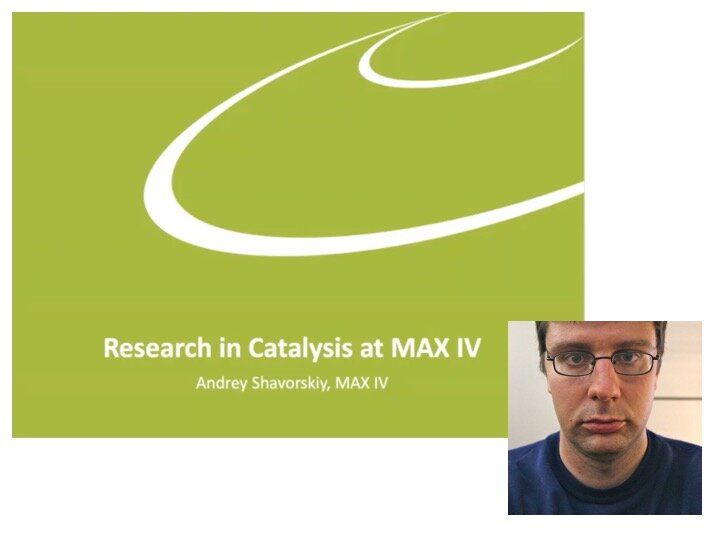VIDEO - Catalysis Working group Webinar - "Research in Catalysis at MAX IV", with Andrey Shavorskiy


VIDEO - Catalysis Working group Webinar - "Research in Catalysis at MAX IV", with Andrey Shavorskiy
Heterogeneous Catalysis is one of the key fields of physical sciences that is attracting attention of both fundamental and applied research. Use of X-rays is particularly important in the studies of catalytic phenomena due to non-destructive nature of analysis, high sensitivity to various physical and chemical properties of a catalyst, and access to different process domains – time, matter, and space.
Speaker: Andrey Shavorskiy, MAX IV
This webinar is part of the work of the Catalyst working group under the theme New Materials.
Abstract
Heterogeneous Catalysis is one of the key fields of physical sciences that is attracting attention of both fundamental and applied research. Use of X-rays is particularly important in the studies of catalytic phenomena due to non-destructive nature of analysis, high sensitivity to various physical and chemical properties of a catalyst, and access to different process domains – time, matter, and space. These advantages of X-ray based techniques could be fully utilized when using x-rays from synchrotron sources due to their high brilliance (number of photons within a small bandwidth and unit of space/angle). MAX IV is the first in the world 4th generation synchrotron storage ring providing highly brilliant x-rays for studies in many areas of life and physical sciences. Several beamlines use both soft and hard x-rays to perform research in Catalysis. In this talk I will present activities conducted at MAX IV that are focused on studies of chemical, electronic, morphological, and structural properties of both model and real catalysts under vacuum, in situ or operando conditions.
Biography
Andrey Shavorskiy is a beamline Scientist at the HIPPIE beamline of MAX IV Laboratory which is dedicated for Ambient Pressure XPS. His background is Catalysis and Surface Science in particular, electrochemistry, artificial photosynthesis, and time-resolved surface phenomena.
